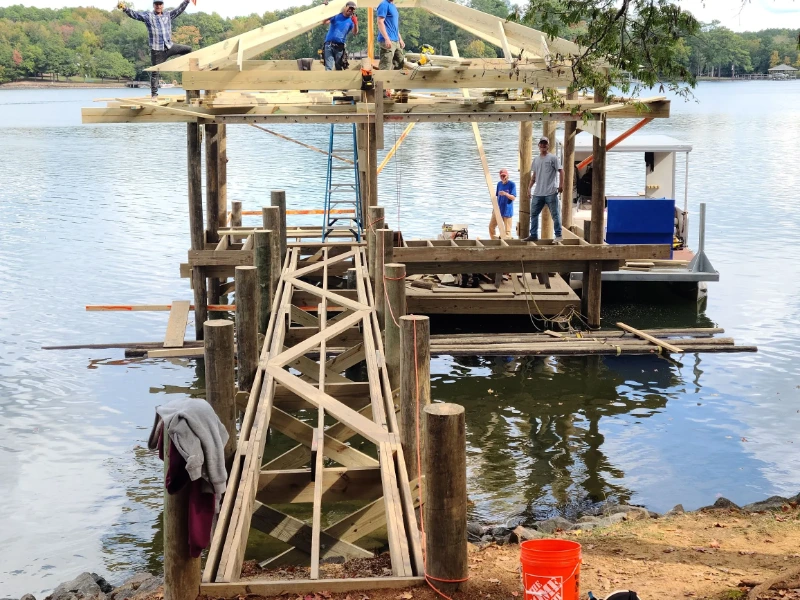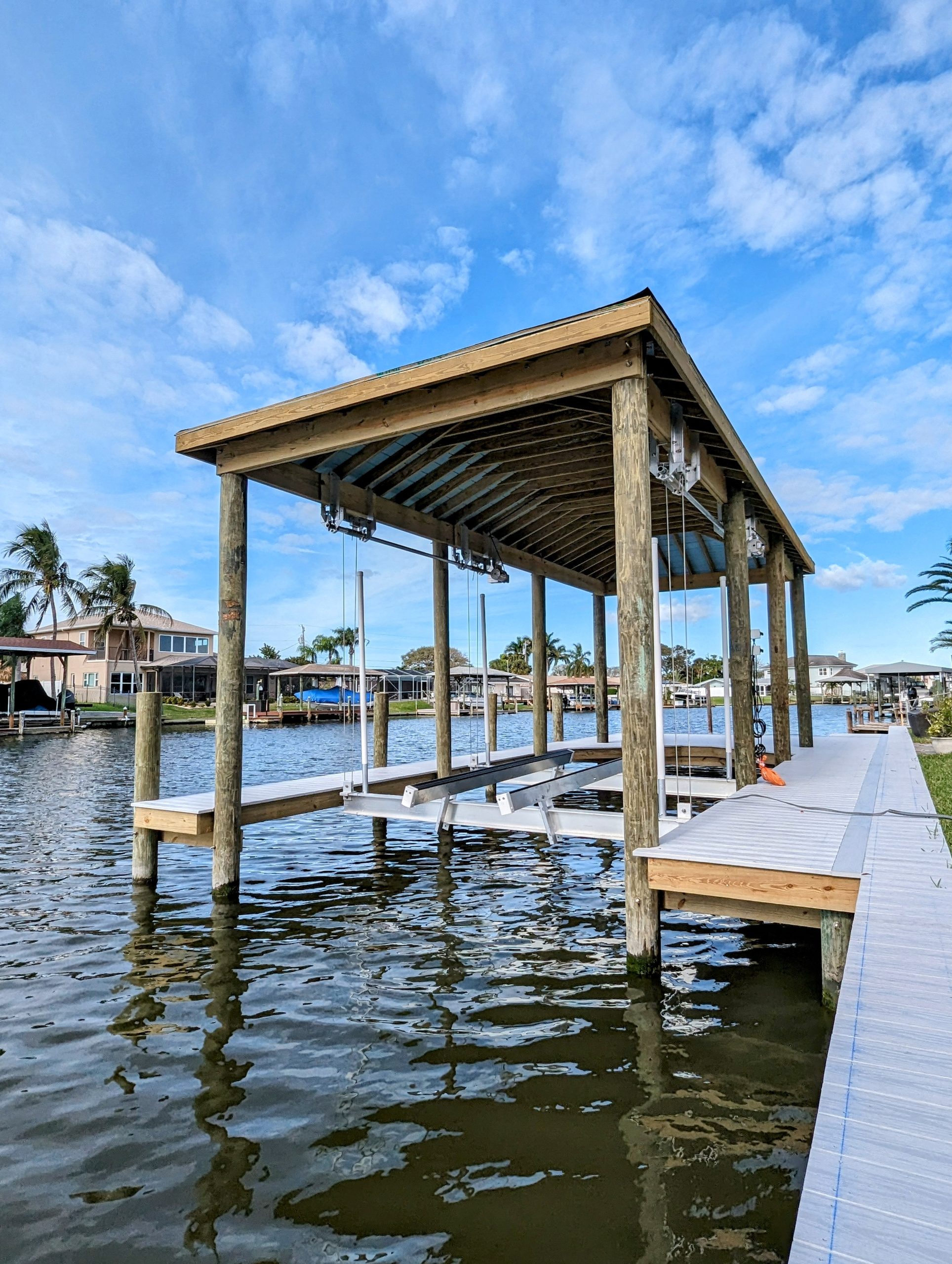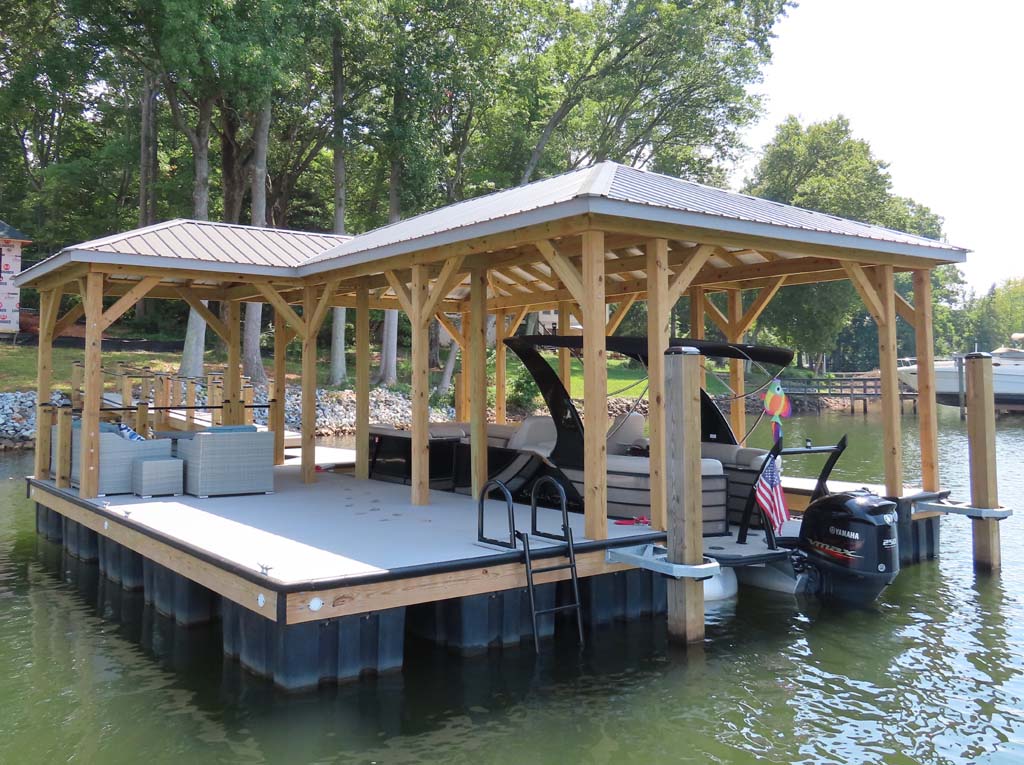Why Regular Maintenance Can Reduce Future Dock Repairs
Why Regular Maintenance Can Reduce Future Dock Repairs
Blog Article
Effective Dock Repair Service Techniques: Ensuring Architectural Integrity
Guaranteeing the architectural honesty of docks via efficient repair methods is paramount for the long life and safety of marine centers. Subsequently, picking the right fixing materials, such as corrosion-resistant alloys and composite materials, is vital for toughness.
Assessing Dock Damages
Assessing dock damages is a critical initial action in ensuring the architectural integrity and safety and security of any docking center. This preliminary evaluation involves a detailed assessment to identify both hidden and visible problems. Trick elements to take a look at consist of the dock's foundation, pilings, outdoor decking, and hardware. Each part needs to be scrutinized for indications of wear, rot, corrosion, or other forms of deterioration that might jeopardize the architectural integrity.
Architectural engineers or certified assessors generally execute these assessments utilizing specialized tools and strategies. As an example, undersea evaluations might employ sonar tools or remotely operated automobiles (ROVs) to detect submerged damage. Over water, visual assessments are enhanced by using wetness meters and various other diagnostic tools to discover underlying concerns not right away noticeable to the nude eye.

Choosing Repair Work Products
Selecting the proper fixing products is a pivotal action in the dock repair procedure, one that straight affects the long life and efficiency of the fixed framework. Product option have to be driven by variables such as environmental conditions, load-bearing requirements, and compatibility with existing dock components. For instance, wood is a standard option for anchors due to its natural durability and aesthetic appeal. Picking the appropriate kind of wood, such as pressure-treated lumber or naturally rot-resistant varieties like cedar or teak wood, is important to endure aquatic settings.
In enhancement to timber, composite materials are increasingly preferred as a result of their longevity and low maintenance requirements. Compounds, commonly made from a mix of plastic and wood fibers, offer superb resistance to rot, bugs, and UV damages. For metal anchors, picking corrosion-resistant alloys such as galvanized steel or marine-grade aluminum is vital to avoid corrosion and make certain structural honesty in saline water conditions.
Epoxy materials and marine-grade sealants are crucial for repairing fractures and securing joints, providing a water resistant barrier and improving the dock's general toughness. By meticulously choosing high-grade products, dock repair work can accomplish durable outcomes, thereby protecting against future destruction and making certain safe, trustworthy usage.
Architectural Support Strategies
Effective structural reinforcement methods are important in making certain the stability and durability of dock repair work. One essential technique entails the usage of steel or composite reinforcement bars (rebar) within concrete structures. Rebar offers added tensile toughness, preventing cracks and distributing tons extra uniformly. This approach is specifically effective for docks subjected to hefty loads or extreme environmental problems.
An additional crucial strategy is the application of fiber-reinforced polymers (FRP) These materials offer high strength-to-weight proportions and superb resistance to rust, making them optimal for reinforcing concrete or wood docks. FRP can be applied in sheets or strips and bound with epoxy resins to boost structural integrity.
Supporting and securing systems also play an important role in architectural reinforcement. Cross-bracing, using steel or wooden beams, can neutralize side forces, decreasing swaying and activity. Securing systems, such as helical piers or driven stacks, provide a stable structure by transferring loads to much deeper, a lot more steady soil layers.
Last but not least, the integration of load-distribution plates can help distribute weight extra equally throughout the dock's surface, reducing localized tension points. These strategies jointly make sure that anchors stay robust and secure, efficient in withstanding the roughness of their operational environment.
Advanced Fixing Approaches

One more innovative technique involves underwater welding, which permits repair services to be performed without the requirement to dewater the location. This technique is especially helpful for addressing structural issues in submerged dock components, more helpful hints ensuring minimal interruption to procedures. Improved welding methods, combined with robot systems, supply accuracy and integrity, thus extending the life-span of the dock.
Furthermore, cathodic security systems are executed to avoid corrosion in metallic dock frameworks. By making use of sacrificial anodes or satisfied present systems, these methods successfully reduce the electrochemical processes that bring about product degeneration.
Finally, advanced surveillance innovations, such as architectural health and wellness tracking (SHM) systems, give real-time information on the condition of dock structures. These systems allow proactive maintenance and timely treatments, ultimately making certain the long-lasting structural integrity of the dock.
Maintenance and Avoidance
Upkeep and avoidance are essential ideas that underpin the durability and security of dock structures. Normal assessments are vital, permitting for very early discovery of damage, prospective weaknesses, and environmental impacts. A proactive approach, involving regular checks for corrosion, rot, and architectural changes, reduces costly repair services and prolongs the dock's operational life.
Preventive measures must consist of using protective coverings to steel elements to secure against corrosion and using treated timber to withstand degeneration. Additionally, making certain proper drain and air flow can prevent water build-up, which is an usual reason for architectural deterioration. Including quality materials and sticking to supplier guidelines throughout construction and fixing phases also play critical functions in enhancing toughness.

Educating employees in dock upkeep ideal methods makes sure regular application of safety nets. Leveraging technical advances, such as drones for inspections and sensors for real-time surveillance, can better improve maintenance efforts. By prioritizing upkeep and prevention, dock owners can ensure structural integrity, operational safety, and cost-effective monitoring over the dock's life expectancy.
Conclusion
Finally, keeping the architectural integrity of aquatic facilities necessitates comprehensive dock repair service methods. Thorough examinations utilizing advanced devices reveal both visible and hid damages, while the selection of proper repair work products enhances resilience. Applying structural support methods addresses stress and anxiety points effectively. Advanced fixing techniques, paired with normal maintenance techniques, guarantee the dock continues to be functional and safe under varied environmental problems. Adopting these strategies dramatically extends the life-span and performance of aquatic framework.
Ensuring the structural integrity of docks with efficient repair service strategies is paramount for the longevity and safety of marine facilities.Selecting the suitable repair service products is a pivotal step in the dock remediation process, one that directly affects the durability and efficiency of the fixed framework.Reliable structural reinforcement strategies are important in making certain the security and longevity of dock repair work. By prioritizing maintenance and prevention, dock owners can make sure structural stability, operational safety and security, Clicking Here and cost-effective management over the dock's learn this here now lifespan.
In final thought, preserving the architectural honesty of aquatic facilities requires detailed dock fixing techniques.
Report this page